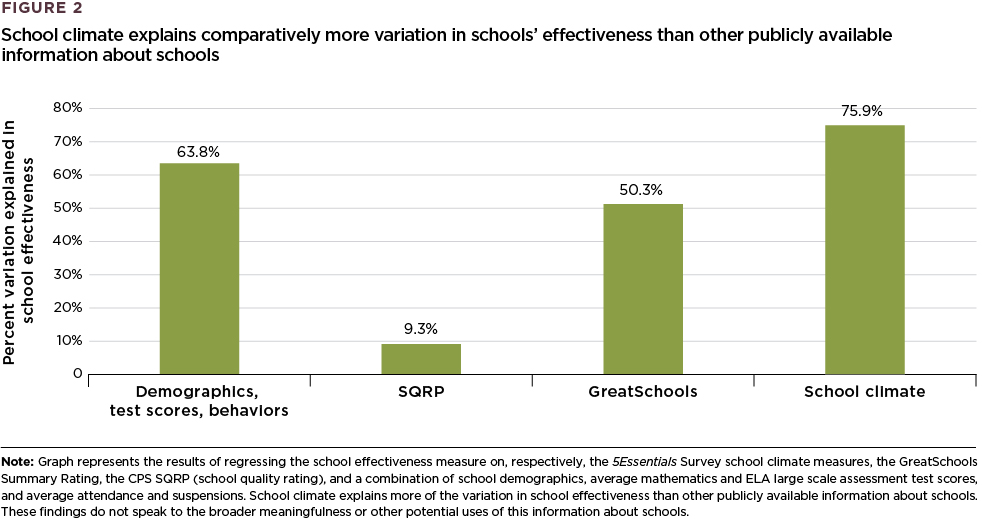1. What is the impact of attending an effective school—one that positively contributes to socioemotional development, test scores, and behaviors recorded by schools—for students’ short-run (end of ninth grade) and long-run (eleventh grade through college) trajectories?
2. What matters most for students’ short- and long-run trajectories: school impacts on students’ socioemotional development, test scores, and/or behaviors?
3. What characterizes the climate and organizational context of effective schools?
This report shines light on what schools can do well to positively affect students’ long-term trajectories. The findings show the value of taking a holistic view of adolescents, and that fostering students' engagement and a challenging, supportive environment for them are the most important things schools can do.
The findings and interpretive summary offer notable insights on some of the most-discussed K-12 policies and practices today, including test scores, school quality metrics, school climate, and student voice.
Key Takeaways
- When schools foster socioemotional development (SED), students are more likely to thrive in high school and beyond.
- Many 'school quality' measures miss the important ways in which high schools foster student thriving.
- School climate is strongly and positively tied to school effectiveness.
- Effective schools are rigorous and relationship-oriented.
Key Findings
- High schools that fostered eighth- to ninth-grade student growth across multiple dimensions positively influenced students’ social and academic trajectories.
- Researchers called these schools ‘effective schools’ and measured three dimensions of growth:
- Self-reported socioemotional development, including social well-being (e.g., sense of connectedness to school) and academic effort and work (e.g., engagement, study habits)
- Researchers called these schools ‘effective schools’ and measured three dimensions of growth:
- Supporting multiple dimensions of student growth had up to double the positive impact of fostering only test score growth on:
- Ninth-grade self-reports socioemotional development, test scores, and observed behaviors
- Eleventh-grade arrests on school grounds
- High school graduation
- Post-secondary enrollment and attendance in year two
- Students’ long-term trajectories were most strongly influenced by fostering student growth on socioemotional development (high school graduation and post-secondary enrollment/attendance) and behaviors (arrests on school grounds in eleventh grade).
- In the short-run, one of the most remarkable findings was that fostering socioemotional development and fostering test score growth had nearly identical impacts on ninth-grade test scores
- High schools that supported students’ development on all dimensions of growth were characterized by strong culture and climates.
- Supportive environments in which students feel safe, supported, and find teachers trustworthy and responsive to their needs
- Ambitious instruction, such that classes are challenging and engaging, the instruction is clear and well structured and students are encouraged to build on their prior knowledge
- Collaborative teachers teachers who are active in school improvement efforts, committed to their school, and engaged in professional development activities
Click below to view a 90-second episode of GO FIGURE, with Shanette Porter explaining Figure 2 of this research (September 12, 2023).



